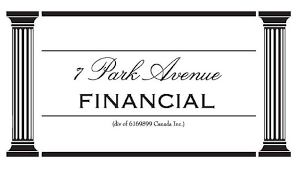|
Working Capital Business Funding: Unlock Your Growth Potential
Complete Guide to Working Capital Business Funding
YOU ARE LOOKING FOR BUSINESS CAPITAL AND WORKING CAPITAL!
Working Capital Decoded: Your Business's Secret Weapon
UPDATED -7/14/2025
You've arrived at the right address! Welcome to 7 Park Avenue Financial
Financing & Cash flow are the biggest issues facing business today
ARE YOU UNAWARE OR DISSATISFIED WITH YOUR CURRENT BUSINESS FINANCING OPTIONS?
CONTACT US
CALL NOW - DIRECT LINE - 416 319 5769 - Let's talk or arrange a meeting to discuss your needs
EMAIL - sprokop@7parkavenuefinancial.com

Harnessing Working Capital: Strategies for Canadian Entrepreneurs
Introduction
In the busy world of Canadian business, the concept of working capital stands as a double-edged sword—essential for operations, yet misunderstood by many.
If you've ever found yourself scratching your head, trying to discern between cash flow, business capital, and the intricacies of working capital, you're not alone.
For Canadian entrepreneurs and business owners, understanding these financial nuances is pivotal to ensuring robust financial health and driving sustainable growth.
Let 7 Park Avenue Financial demystify the complexities surrounding working capital, its implications for your business, and how to harness it effectively.
Cash Flow Gaps Are Killing Canadian Businesses Daily
Your business generates revenue, but cash flow gaps create operational nightmares.
Suppliers demand payment while customers delay theirs, leaving you scrambling for funds. These gaps force difficult decisions: delay payroll, skip inventory orders, or miss growth opportunities.
Let the 7 Park Avenue Financial team show you how Working capital business funding eliminates these painful choices by providing immediate access to funds when you need them most.
The Myth of Working Capital
We can hear our clients now! How could working capital (isn't that cash flow?) possibly be bad for my firm's financial health? Let's talk about that.
Defining Working Capital
The technical financial folks define working capital as a very basic calculation that even the non-financial business owner can do—simply deduct your current liabilities from your current assets (from your balance sheet statement) and, voilà!
Congratulations, you have working capital. Hopefully, that number is a positive number because when it's negative you're technically insolvent, and that's a subject and solution for another day!
The Implications of Positive Working Capital
Anyway, our working capital number is positive—that's good, right?
Not necessarily, and that's the premise of the info we share here because if you have positive working capital your funds are tied up in receivables, inventories, and prepaid items.
Understanding and Measuring Working Capital
It is therefore very important to understand what makes up working capital, how you can monetize or cash flow it, and most importantly, but often totally overlooked, how you can measure business capital and working capital.
Key Metrics for Business Capital
The essence of measuring your working capital revolves around turnover, days sales outstanding, inventory turns, and payables days outstanding.
The good news is that you can very easily calculate and track these measurements, and we can virtually guarantee they will better assist you in understanding why your investment in business working capital is very much a teeter-totter of good news/bad news.
The Money Travel Analogy
Do you like to travel? Money does also, and consider how long it takes for a dollar to travel through your company.
From the day you place an order, purchase product, pay for product, bill a receivable, and yes, collect that receivable that total cycle can be easily 200 days if not more.
That's a lot of travel, so you hopefully can see our premise here that your investment in your working capital accounts is not necessarily a great thing.
Components and Challenges of Your Business
Your business is composed primarily of inventory, receivables, and payables (also fixed assets). We therefore strongly suggest to clients that they understand the turnover and overall return they are getting from these key asset accounts.
You would understand your working capital situation somewhat better if it were not for those pesky issues that you can't control—business owners and financial managers recognize them well and run into them every day.
They are sales growth and decline, your fixed costs that you have to pay and manage no matter what, and any financial distress you may be experiencing from past external factors—i.e., a bad year, etc.
Finding the Right Balance with Working Capital
The holy grail of business capital and working capital financing is when you have strong controls on internal asset turnover and at the same time you have access to external working capital via bank lines, asset-based lending facilities, commercial business loans, government loans, tax credit financing, etc.
We constantly remind clients that if they are turning over their working capital accounts more efficiently all the time it in effect a measure of the true success of your company—think of it, you're buying things, paying for supplies on time, and customers are paying you on time and ordering more goods and services.
A quick tool for measuring your progress in this area is simply to take your receivables days and inventory days, subtract your payables days outstanding, and if that number is improving, or going down you are winning the "working capital is bad for your health" premise we have presented.
Understanding Business Capital in the Canadian Context
As a Canadian business owner, you are both granting credit and requesting credit (customers and suppliers respectfully).
Understanding business capital in this manner will allow you to finance better internally and borrow via banks, finance firms, asset-based lenders, etc.
The "Green" Capital Movement in Canada: As sustainability becomes a central theme in global discussions, Canadian businesses are uniquely positioned to leverage this. Instead of traditional capital, businesses can seek "Green Capital"—funds specifically allocated for eco-friendly and sustainable projects. Financial institutions are more keen than ever to fund projects that resonate with the global sustainability drive.
Thus, a business proposition underlined with eco-conscious initiatives can not only access capital faster but can also enjoy favorable terms given the PR and environmental value such initiatives bring to lenders.
Case Study: Manufacturing Company Success
Background: A Toronto-based manufacturing company faced a $75,000 cash flow gap when their largest customer delayed payment for 60 days while suppliers demanded immediate payment for raw materials.
Solution: Working capital business funding provided $100,000 within 72 hours, allowing the company to maintain production schedules and meet supplier obligations.
Results: The company maintained customer relationships, avoided production delays, and used the breathing room to diversify their customer base, reducing future cash flow risks.
Key Benefits:
- Maintained operational continuity
- Preserved supplier relationships
- Avoided costly production delays
- Strengthened overall business stability
Key Takeaways
- Cash flow timing - Understanding when money enters and exits your business determines funding needs
- Operational expenses coverage - Ensuring payroll, rent, and supplier payments remain current during revenue gaps
- Repayment structure alignment - Matching payment schedules with your business's cash flow patterns
- Funding amount optimization - Calculating precise amounts needed without over-borrowing and increasing costs
- Lender selection criteria - Choosing reputable lenders with transparent terms and competitive rates
The Role of Business Capital in Decision-making:
Business capital (both working capital liquid assets and long-term capital) impacts decisions around investments, growth opportunities, and risk management in day-to-day operations.
Adequate access to and efficient management of business capital determine a company's ability to seize opportunities and weather financial downturns.
Turnover and Efficiency Metrics:
Metrics like turnover, days sales outstanding, inventory turns, and payables days outstanding help measure the efficiency of working capital management.
Faster turnover indicates efficient use of assets. For instance, a shorter days sales outstanding means the company collects its receivables quickly.
Internal vs. External Working Capital:
While internal working capital is tied to a company's operational efficiency, external working capital refers to external financing methods like bank loans, asset-based lending, grants, etc.
A balanced mix of both ensures sustainable business growth. Access to external capital can support and expand operations, especially when internal capital is limited.
Conclusion
Call 7 Park Avenue Financial, a trusted, credible and experienced business financing advisor about our "health" problem and what your tools and solutions might be for better business financing success.
FAQ
What exactly is working capital?
Working capital is the difference between a company's current assets and liabilities. It measures short-term financial health and liquidity. To calculate the working capital formula the relationship is called the "working capital ratio."
Generally speaking, a good working capital ratio is viewed as 2:1.
Why is a positive working capital significant?
Positive working capital indicates that a business can cover its short-term liabilities using its short-term assets, ensuring smooth operations and the ability to meet financial obligations.
How do metrics like days sales outstanding affect my business?
Such metrics determine the efficiency of your working capital management. For example, a shorter days sales outstanding means you're collecting payments faster, optimizing cash flow.
How do external and internal working capitals differ?
Internal capital relates to the company's efficiency in managing a company's working capital via assets and liabilities, accounts payable and accounts receivable, while external capital refers to external financing methods, like a line of credit or working capital loans or other types of Canadian business financing.
Why is understanding business capital essential for Canadian entrepreneurs?
Grasping business capital concepts enables informed decisions, better risk management around the company's balance sheet and interest payments, and maximizes growth opportunities in the Canadian market around long-term debt and project-related expenses.
What types of businesses qualify for working capital business funding?
Working capital funding serves businesses across various industries, particularly those experiencing seasonal fluctuations, long payment cycles, or rapid growth phases. Manufacturing companies, retail businesses, service providers, and professional firms commonly utilize this financing to bridge cash flow gaps. Merchant cash advances are popular , they are short term working capital loans for business credit solutions / debt financing needs of small business owners.
How quickly can I access working capital business funding?
Working capital funding typically provides faster access than traditional loans, with many lenders offering approval within 24-48 hours and funding within 3-5 business days. Online lenders and alternative financing companies often process applications more rapidly than traditional banks.
What documents do I need for working capital business funding applications?
Working capital funding applications typically require recent financial statements, bussiness bank account statements, tax returns, and accounts receivable aging reports. Some lenders may also request business plans, cash flow projections, and proof of business registration.
How much working capital business funding can my business obtain?
Working capital funding amounts vary based on your business's annual revenue, the company's cash flow patterns, and creditworthiness. Most lenders offer funding ranging from $10,000 to $500,000, with some providing higher amounts for established businesses with strong financial profiles.
What are the typical terms for working capital business funding?
Working capital funding terms typically range from 3 to 18 months, with repayment structures including daily or weekly payments. Interest rates and fees vary based on risk assessment, funding amount, and repayment term length.
How does the Canadian regulatory environment influence business capital?
The Canadian regulatory environment sets standards for lending, borrowing, and managing business finances, ensuring transparency and protecting both businesses and lenders.
Are there sector-specific nuances in accessing working capital in Canada?
Yes, sectors like technology, agriculture, or retail may have unique requirements and challenges when accessing and managing working capital in Canada, including a busy season for many industries.
How does the global economic scenario affect working capital for Canadian businesses?
Global economic shifts can impact import/export, interest rates, and investor confidence, influencing the availability and cost of working capital for Canadian businesses.
What are the most common mistakes businesses make with working capital management?
Common mistakes include not forecasting cash flow, over-relying on short-term debt to reverse negative working capital, and not regularly reviewing working capital metrics.
Are there tools or software that can help manage and optimize working capital for my business?
Yes, several financial tools and software solutions cater specifically to net working capital management, providing analytics around operating expenses, forecasts, and actionable insights for businesses.
How does working capital business funding reduce business stress?
Working capital funding eliminates the daily anxiety of cash flow management by providing predictable access to funds when needed, allowing business owners to focus on growth strategies rather than survival tactics.
What competitive advantages does working capital business funding provide?
Working capital funding enables businesses to maintain consistent inventory levels, offer better payment terms to customers, negotiate bulk purchase discounts, and respond quickly to market opportunities that competitors might miss.
How can working capital business funding improve supplier relationships?
Working capital funding allows businesses to pay suppliers promptly, qualifying for early payment discounts, better pricing negotiations, and priority treatment during supply shortages or high-demand periods.
What growth opportunities become possible with working capital business funding?
Working capital funding enables businesses to invest in marketing campaigns, expand product lines, hire additional staff, upgrade equipment, or enter new markets without depleting operational cash reserves.
Statistics on Working Capital Business Funding
- 82% of small business failures result from cash flow problems
- Canadian businesses wait an average of 47 days for payment from customers
- 67% of small businesses experience cash flow challenges within their first year
- Working capital funding approvals average 24-48 hours vs 2-8 weeks for traditional loans
- 45% of businesses using working capital funding report improved supplier relationships
Citations
- Statistics Canada. "Business Dynamics in Canada: Survival and Growth." Government of Canada, 2023. https://www.statcan.gc.ca
- Canadian Federation of Independent Business. "Small Business Cash Flow Report." CFIB, 2023. https://www.cfib-fcei.ca
- Bank of Canada. "Business Outlook Survey: Canadian Business Financing Trends." Bank of Canada, 2024. https://www.bankofcanada.ca
- Industry Canada. "Small Business Financing in Canada: Current Trends and Challenges." Innovation, Science and Economic Development Canada, 2023. https://www.ic.gc.ca
- Manulife Bank. "Canadian Business Financial Health Report." Manulife Financial, 2024. https://www.manulife.ca
- 7 Park Avenue Financial '" Working Capital Loans " https://www.7parkavenuefinancial.com/working_capital_loans_cash_financing_finance.html

' Canadian Business Financing With The Intelligent Use Of Experience '
STAN PROKOP
7 Park Avenue Financial/Copyright/2025

ABOUT THE AUTHOR: Stan Prokop is the founder of 7 Park Avenue Financial and a recognized expert on Canadian Business Financing. Since 2004 Stan has helped hundreds of small, medium and large organizations achieve the financing they need to survive and grow. He has decades of credit and lending experience working for firms such as Hewlett Packard / Cable & Wireless / Ashland Oil
|